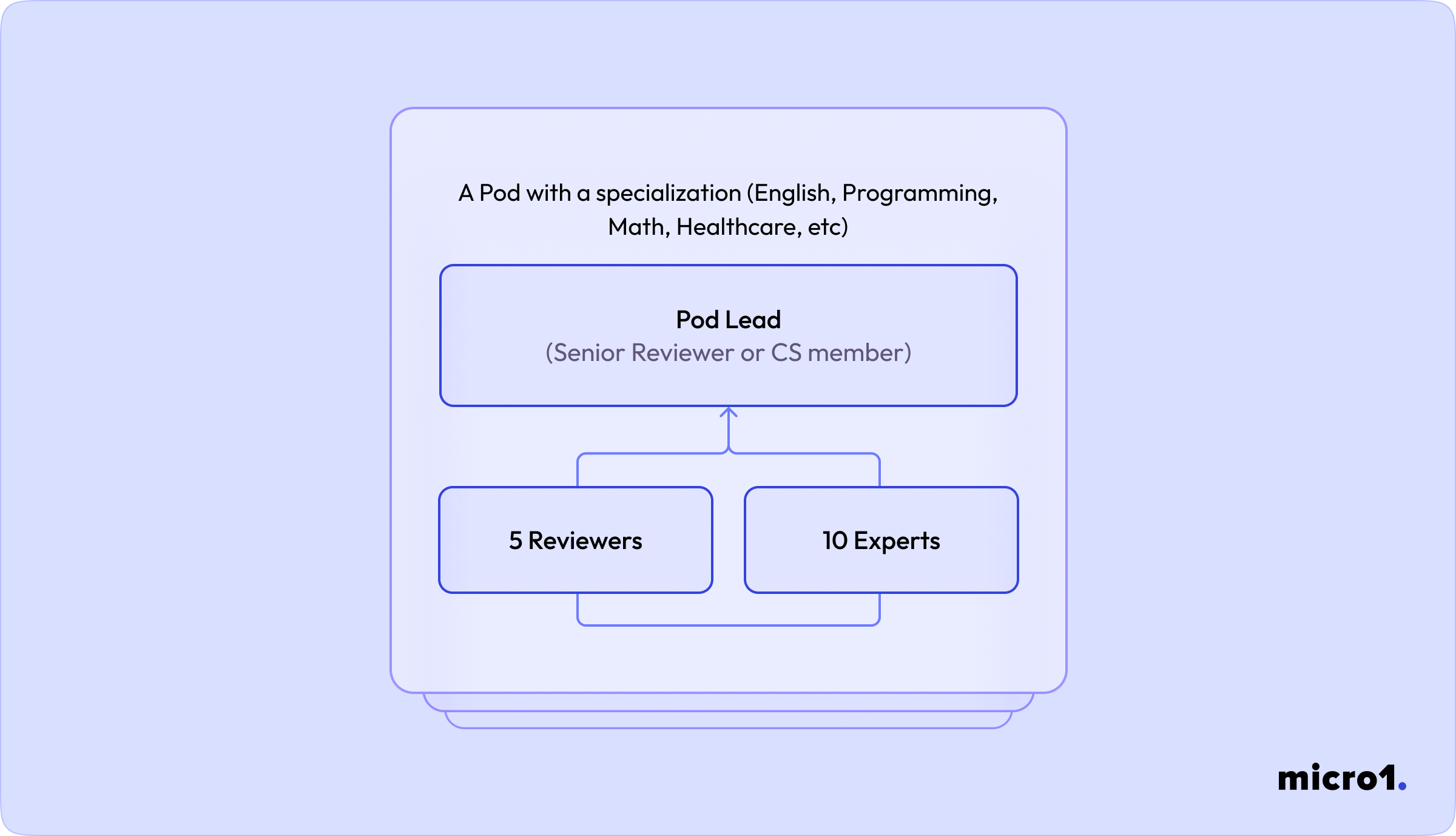- People know who their manager is.
- Pod Leads feel responsible for upskilling their experts.
- Experts feel more comfortable asking for clarification within their pods.
- Since everyone in the pod has the same specialization, pods can stay together between projects.
- Experts can take feedback from their pod’s reviewers more constructively.


